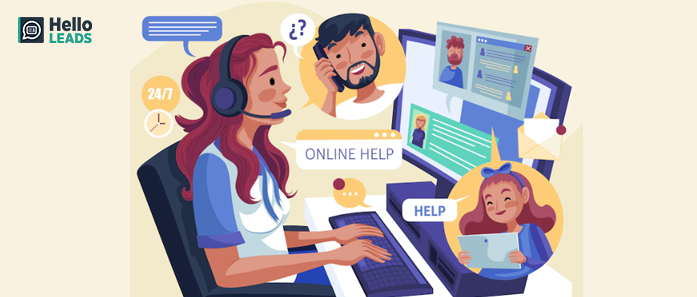
We keep hearing the adage ‘Happy employees result in happy customers, but did you know they can also boost your business’s growth? Here’s how employee experiences affect revenue growth.
According to a study conducted by Salesforce and Forbes, creating a satisfying employee and customer experience can increase revenue 1.8 times. It has been found that companies with the right customer experience (CX) and employee experience (EX) grow revenue faster than their peers.
Additionally, focusing solely on customer experience does not result in the same growth rate. Customer-focused organizations may not achieve high levels of employee satisfaction or grow faster than their competitors.
The study further states: Employee satisfaction is one of the secrets to faster revenue growth. “If your employees love their jobs, your customers will love your brand”.
What are Employee Experience (EX) and Customer Experience (CX)?
The employee experience (or EX) refers to a worker’s overall impression of the organization through all its touchpoints. As an employee leaves at the end of their tenure, it summarizes their perception of their role at the company.
Customer Experience (or CX) is defined as the entire customer journey, from first contact to becoming a loyal and happy customer.
Link Between Employee Experience and Customer Experience
It is crucial to consider how employee experiences directly impact customer experiences before learning about the link between employee experiences and revenue growth. Statistics support the following examples.
1. Customers benefit from happy employees
A Gallup report titled The State of the American Workplace found that engaged employees generate more sales for their companies. According to the report, there are several possible causes. Engaged employees are more responsive to customer needs. When they help the customer find the right product, they are more likely to ask pertinent questions.
2. Customer service is improved by happy employees

Employee experience has a massive impact on the quality of customer service, even though organizations expect every employee to provide the highest possible service. Gallup’s study mentioned earlier found that happier, more engaged employees are more enthusiastic about helping customers and seeking solutions. They also assist customers a second time. An employee who has experienced a negative experience is moodier, more lethargic, and less likely to follow through on a customer complaint.
3. Companies that treat their employees well are loved by their customers
Starbucks is an excellent example of this. If you’ve ever been to Starbucks, you’ll know how well the employees take care of customers. As a result of their employer treating them nicely, employees treat customers well. One of the reasons Starbucks is so popular is its excellent employer-employee relationship. A study conducted in 2014 found that most customers love Starbucks because its employees are treated fairly. Engaged employees are less likely to leave the company, which increases customer loyalty. In Medalla’s research, the stores and locations with the lowest turnover rates have the highest customer satisfaction.
How to Improve Employee Experience (EX) and Customer Experience
Enhancing employee experience and customer experience can boost revenue growth in a variety of ways. However, we recommend focusing on the following few points:
(i) Map employee journeys
Employee journey maps illustrate the various stages of an employee’s career within an organization. Throughout the journey, you must identify opportunities to close the gap between the current state and the desired state.
(ii) Know who your customers are
Your customer support team should consider customer experience principles when dealing with different types of customers. Your organization needs to be able to empathize with your customers’ situations if it wants to understand their needs and wants.
You can do this by segmenting your customers and creating personas (or customer profiles). Name and describe each persona. Customer support teams can better understand their customers by creating personas. Additionally, it’s the first step to becoming truly customer-centric.
(iii) Employee Onboarding and Internal Communication

First impressions last a lifetime. It applies to dating, interviews, and the employee experience journey as well. Within six months of starting the first job, 33% of new hires look for a new position. Poor initial experiences are one of the biggest reasons for this. Communication, contact, and feedback from humans continue to define effective onboarding experiences.
For this transition, peer-to-peer is ideal. New hires are paired with seasoned employees to help them adapt to their jobs’ social and performance aspects. It also helps to customize the onboarding experiences for each job role, such as sales or customer support. This helps them quickly become contributing members of the team. The right onboarding = fresh talent, fresh ideas, and more revenue.
Internal communications are like road signs for your company. Among other things, they will tell you where you are, which way to go, potential hazards, road regulations, and nearby services.
Communication within an organization consists of:
- An organization’s purpose. By promoting their company culture and goals, and showing employees how their work is making a positive impact.
- A leader’s role is to ensure everyone is on the same page, to tell employees where they are making mistakes, and what they are doing right.
- Build a community by bringing issues to the attention of your team, getting support, and forming connections.
Communication is the key to teamwork and employee happiness. A happy employee equals more revenue.
(a) Regularly respond to employee feedback
Actions speak louder than words. Employees are more confident and open to a company that acts on their comments. Customers’ or employees’ experience journeys are equally valuable.
Implementing employee feedback indeed has certain challenges – for example, the size and background of the organization. There is a lot of resistance to changing ingrained practices overnight.
Your management team should be consulted about the changes. Create an action plan for implementing the changes in phases so that everyone has time to adjust. For startups and small businesses, this would not be an issue.
Revenue increases when processes are more efficient. However, regardless of company size, it’s critical to act immediately if an employee raises a serious concern or allegation.
(b) Create an emotional connection with your customer
When a member of the team establishes an emotional bond with a customer, great customer experiences are achieved.
According to research published in the Journal of Consumer Research, attitudes that influence decisions are shaped by emotions, which account for more than 50% of an experience.
Because they are emotionally invested and recall how they feel after using a product or service, customers become loyal. Businesses that focus on emotional connections beat rivals in terms of sales growth by 85%.
Customer satisfaction is linked to employee experiences and ultimately leads to Revenue growth.
Investing in employee experience is one of the simplest ways to increase sales, profitability, and customer loyalty. Customers who are satisfied with your business will almost certainly spend more money with you. It all comes down to optimizing your employee experience journey, from attracting better talent to keeping consumers satisfied. Employee experiences and revenue growth are related.
Share this blog :













Leave a Reply